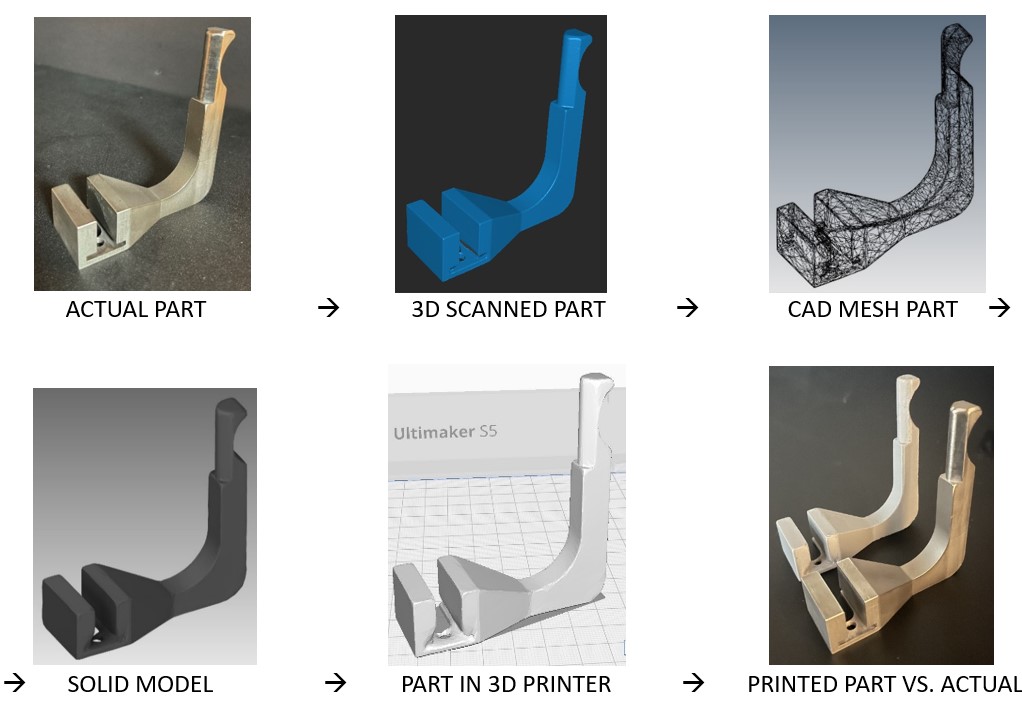3D Scanning
Services
3D scanning revolutionizes industries by providing efficient and accurate ways to capture detailed three-dimensional models. Let’s delve into its advantages:
REVERSE ENGINEERING
QUALITY INSPECTION
PART ADAPTATION
Speed: 3D scanning is remarkably fast. It swiftly captures intricate details, making it ideal for time-sensitive projects.
Safety: Unlike traditional methods that might involve physical contact or exposure to hazardous environments, 3D scanning is non-invasive. It ensures safety for both the object being scanned and the operator.
Cost-Effectiveness: The cost of 3D scanning equipment has decreased over time, making it accessible to a broader range of professionals. Additionally, its efficiency reduces labor costs associated with manual measurements.
High-Quality Models: 3D scanning produces precise and detailed models, capturing even the most intricate features. These models are invaluable for design, analysis, and visualization purposes.
Whether for product design, architectural documentation, reverse engineering, or art preservation, 3D scanning empowers professionals to explore new dimensions and unlock innovative possibilities.
Blue Light Metrological 3D Scanning
Blue light has a more narrow wavelength, it enables enhanced filtering and higher quality scans than white light. 3D scanning allows innovators to design 3D-modeled objects that can be tailor-made for real-world situations. For instance, custom medical devices can be created using digital modeling tools that are form-fitted to the patient. Aftermarket enhancements for consumer products can be made to match perfectly from the design phase. And then, of course, these models might quickly be sent to a 3D printer and manufactured right on the spot.

Why consider 3D Scanning for your next project?
3D scanning indeed revolutionizes the process of reverse engineering. Instead of painstakingly sketching out an existing object’s design, engineers can now capture its precise geometry using a 3D scanner. Here’s how it benefits everyone:
- Efficiency: Engineers save hours that would otherwise be spent manually drawing the original design. This efficiency translates to time saved.
- Cost-Effectiveness: As said, time saved is money saved. By accelerating the reverse engineering process, companies can reduce costs associated with design iterations and prototyping.
- Accuracy: 3D scanning captures intricate details, ensuring accurate representation of the object. This precision leads to better outcomes in subsequent design phases.
- Rapid Capture: Laser scanners capture intricate details of physical objects with remarkable speed and precision. This efficiency significantly reduces the time required for data acquisition.
- Digital Replication: Once scanned, parts are transformed into a digital 3D model. This digital representation allows fabricators to manipulate, refine, and reproduce the part without delay.
- Prototyping and Reproduction: From the digital model, rapid prototyping techniques such as 3D printing or CNC machining can create physical replicas. These replicas can be used for exhibitions, galleries, or even commercial production.
- Preserving Originals: By having accurate digital records, manufacturers can preserve the original part while still showcasing high-quality reproductions.
- Scaling Up: Once digitized, you can scale up the digital model to any desired size.
- 3D Printing: The scanner doesn’t shy away from imperfections. It captures every bump, texture, and roughness. These details contribute to a more natural and authentic appearance in the final 3D print.
- Virtual Assembly: With 3D scans, you can virtually assemble components before physically printing them. This allows you to check for fit, alignment, and any potential issues without producing a physical replica. By identifying fitment problems early in the digital stage, you avoid costly mistakes during actual production.
- Iterative Design: Engineers and designers can iterate quickly, making adjustments based on the virtual assembly results.
In summary, 3D scanning complements 3D printing by ensuring precision, reducing errors, and streamlining the entire process.
How the 3D Scanning process works…

